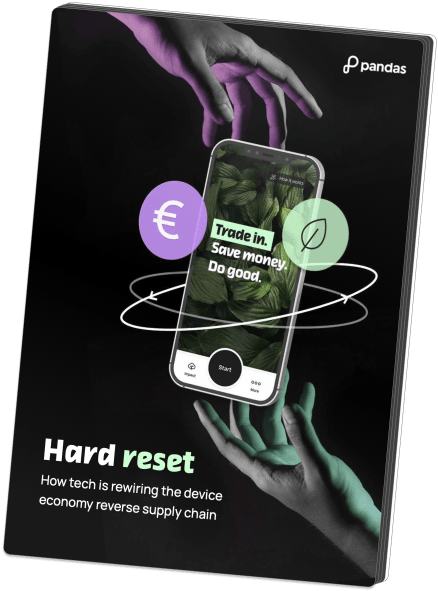In our rapidly evolving digital age, where smartphones and connected devices have become an integral part of daily life, consumers have begun to recognize the lasting value of their devices. Instead of relegating these devices to obscurity, they’re seeking ways to extend their life, contributing to a more sustainable approach to technology usage. This shift is transforming the customer experience and opening new opportunities for businesses operating in the trade-in market.
Rethinking the trade-in experience
Traditionally, trade-in programs have been cumbersome, often deterring both consumers and businesses from engaging in the process. However, the landscape is changing. With sustainability and the circular economy taking center stage, many Mobile Network Operators (MNOs), tech retailers, and Original Equipment Manufacturers (OEMs) are reevaluating their approaches.
Trade-in programs: overcoming the hurdles
In this changing landscape, trade-in programs have emerged as an imperative. Businesses in continental Europe, in particular, need to establish or enhance their trade-in programs to meet these new demands. However, it’s not just about creating a program; it’s about making it attractive to consumers. One significant challenge has been the lack of consumer knowledge about trade-in options and resistance to engage in these programs. To address this, companies first need to have an omnipresent trade-in program that is frictionless and easy for consumers to engage, before they can offer fair and competitive pricing and make the process as straightforward as possible. The infrastructure to manage the increased demand must also be in place.
Challenges in traditional processes
Inefficiencies and discrepancies in grading have plagued traditional trade-in processes, often reliant on manual evaluation, negotiation, and subjective judgment. This not only results in lower conversion rates but also causes discrepancies between quoted and final trade-in values. In a 2023 article, Kelley Blue Book found that the trade-in process is “a common source of frustration for consumers.” Kelley Blue Book also noted that the trade-in process can be “time-consuming and confusing.” And that’s not just for consumers – businesses also find them “too lengthy and complex”, as noted by the National Automobile Dealers Association (NADA) in a 2022 survey.

The role of technology and the Pandas solution
To address these challenges, new technologies are emerging. Some operators now use apps that allow customers to self-grade their devices, providing more accurate estimates and binding offers. While such native apps have been introduced, they still don’t offer a comprehensive solution.
At Pandas we understand that operators need a better way to manage their trade-in programs holistically. Our technology was developed to create an omnichannel trade-in experience for customers that is quick and easy to navigate without specialized help. Through the Pandas Grading Web App, part of our Trade-in as a Service (TaaS) platform, we can assess core hardware, biometrics, and battery health, offering a more precise initial quote. For customers who prefer in-store service, the Pandas counter-top grader, Pandas Flex, provides a high-precision assessment of a device’s cosmetic and physical condition, eliminating the need for human judgment and negotiation. This separation streamlines the trade-in process and enhances the customer experience.
The future of trade-ins
As technology advances, it offers new possibilities for the trade-in experience. The innovation that has emerged supports the transformation of customer experiences, providing easier, more objective, and secure trade-in options. For businesses looking to thrive in this evolving landscape, it’s essential to consider trade-in programs with a strategic and customer-centric approach. Such programs are vital to sustainability, essential to meet consumer expectations, and good for business. As MNOs, tech retailers, and OEMs explore these new opportunities, it’s clear that the future of trade-in programs will be driven by innovative technologies that enhance the overall customer experience.
In conclusion, the trade-in market is evolving rapidly, and the incorporation of technology is leading to a fundamental shift in customer experiences. As environmental concerns gain momentum and consumers increasingly value sustainability, businesses must adapt and innovate to provide trade-in solutions that are convenient, fair, and transparent. This transformation isn’t just about meeting regulatory requirements; it’s a chance for businesses to lead with sustainability and make an enduring impact on the industry.




